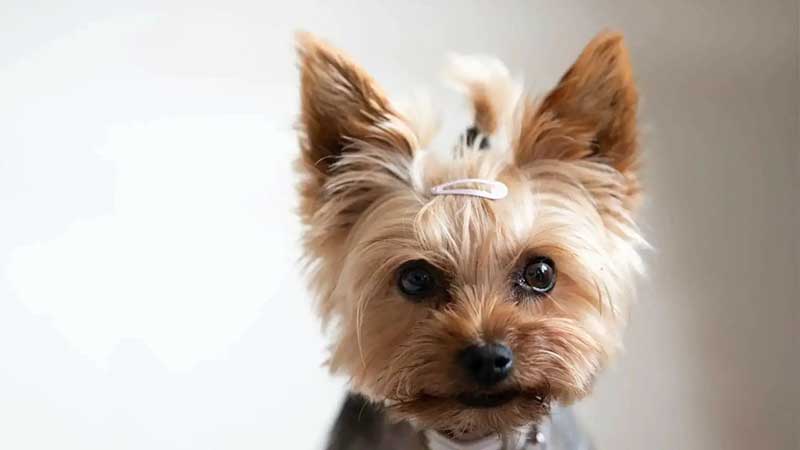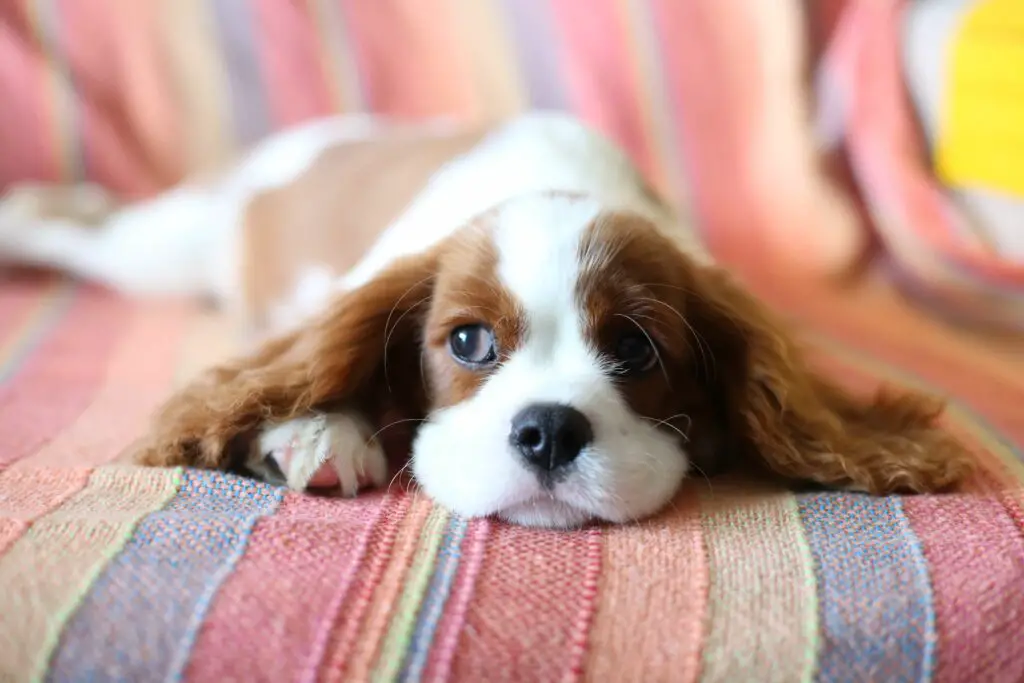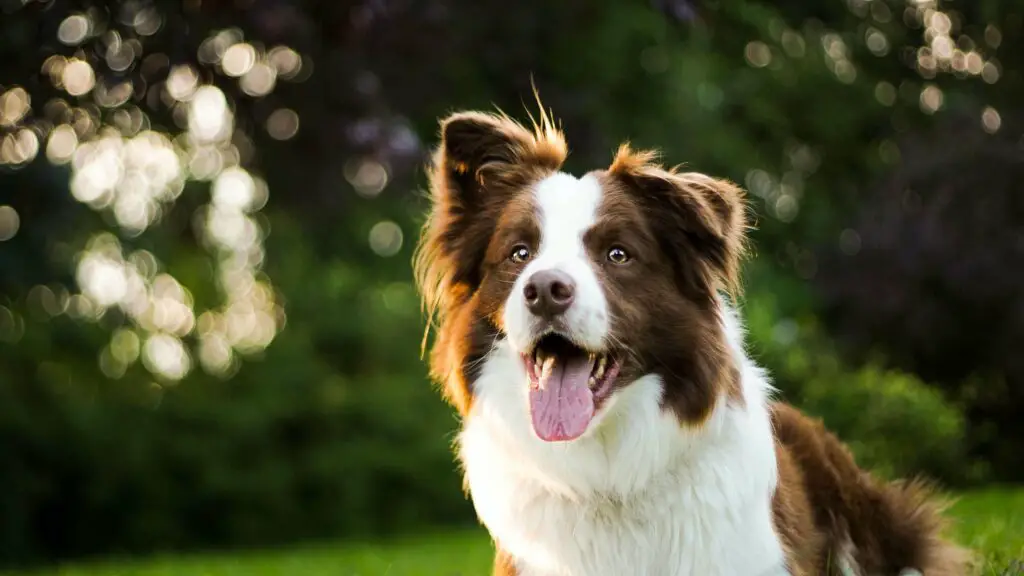8 Dog Hair Loss Home Remedies – Useful Information and Tips

Shedding hair from time to time shouldn’t raise alarms. But, should these instances of hair loss become frequent, it’s important to pay attention.
Be it for you or your doggo. Massive hair loss means something is brewing up inside the body and it is not good.
Not only does it affect your dog’s outlook, but the root cause may also be making your furry friend miserable on the inside.
The poor thing is simply juiced up and can’t even reel off what’s bugging it. But as dog parents, there are signs to watch out for.
When you recognize any of the signs, don’t just sit back. It is time for some action a.k.a remedies to cure or prevent it from further happening.
Here is the secret sauce – ever heard of dog hair loss home remedies? Yes, natural home remedies are a real thing. They are proven over the years and work like a charm. Every time.
So, here’s the inside scoop on everything you need to know about why your doggo is experiencing extreme hair loss, what signs you should be wary of, and how to deal with them in the best possible way.
What Causes Hair Loss In Dogs?
While we are at it, it is important to know the difference between hair shedding and alopecia.
Hair shedding is a natural process that involves the removal of old fur to pave way for new healthy coat.
It is occasional while hair loss is a medical condition that can result in bald spots.
So let’s get down to the bigger question here; what causes hair loss in dogs? Here is what our dog anatomy experts have to say about this.

a. Blame The Genes
Italian greyhounds, Chihuahua, Dachshunds, and Dobermans are more prone to hair loss than others.
Thanks to their genes, these dogs may start showing signs of hair loss just after their first year. Look out for bald spots on the lower neck, the outer side of the ears, chest, belly, and thighs.
Fact: Remember genetic hair loss is either symmetric or at one spot with usually no inflammation.
b. Infections
Redness, hives, and alopecia are all caused by bacterial infection. Other than these, ringworm is a fungal infection that is a major cause of hair loss in dogs.
Itchy skin, inflammation, and hair loss around the eyes, ears, and mouth are symptoms that your dog fur is infested with mites.
c. Allergies
Like humans, dogs can be allergic to a lot of stuff. From food to the environment or parasites, anything can spark these allergic reactions.
And allergies are one of the reasons why dogs face hair loss. Get to the root cause and make sure that your pup stays away from the triggering element.
d. Crushing’s Disease
A serious medical condition in dogs is caused by the overproduction of cortisol in the adrenal gland.
Crushing’s disease might be one reason for your dog’s hair loss. Excessive eating, drinking, urinating, and panting are other symptoms to watch out for.
e. Rashes
Prolonged and excessive rashes can be a cause of hair loss. Rashes can occur due to various reasons.
Excessive rubbing of skin, medications, chemicals from shampoos, sometimes dog clothes or collars, the cause could be anything. Rashes can appear within minutes or hours of exposure.
f. Calluses
This is more common in heavy dogs. Over time, the weight of the body can cause sores on the parts that come in constant contact with hard surfaces.
These pressure sores further lead to calluses that harden or thicken the skin, resulting in hair loss.
g. Other Medical illnesses
There can be numerous underlying issues that can cause hair loss. Poor nutritional food is a major reason.
Hypothyroidism, growth hormone disorders, lactation, pregnancy, or even stress and anxiety among dogs can make them lose a significant amount of hair.
10 Signs Your Dog Is Losing Hair
Sometimes it is easy to confuse hair shedding with hair loss. But then if you look closely for alopecia symptoms, you can tell what’s up in your doggo’s fur world.
Sometimes there may not be any apparent signs initially. Like when infested with fleas, ticks, or lice, it is not easily visible.
But over time, if the core problem is not diagnosed, your dog starts showing signs which are out of the norm. Here are some of these common symptoms of alopecia to guard against.
1. Noticeable Bald Spots
Extreme and frequent hair shedding leads to visible bald patches over the body of your dog. They could be anywhere from behind the ears to under the belly.
2. Reduced Fur Coat
It’s not always the bald patches. Sometimes visible thinning of the dog’s coat may raise concerns. That is a true sign that it’s not the hair shedding your dog is going through.
3. Skin Irritation Leading To Scratching
Is your dog irritated and scratching on the same spots and still not relieved? Check for underlying issues. Skin irritation and scratching could be signs that your dog is going through alopecia.
4. Dandruff
Yes, dogs have dandruff too. Notice the white flaky stuff in its hair – that’s dandruff. Hair loss is one of its significant symptoms.
5. Bleeding Or Oozing Mucus
Excessive scratching on itchy dry skin can cause wounds to open. As a result, you can witness occasional bleeding or oozing and eventually hair loss.
6. Unpleasant Smell
An unpleasant smell reveals a sign of infection. Bacterial or even fungal yeast infections in dogs are usually packed with a foul odor. These infections become a major cause of hair loss.
7. Redness And Inflammation
Notice any unusual redness and inflammation on your pet’s skin? Something in your dog’s body is acting up. It can be a sign that your dog is going through hair loss.
8. Flaky And Dry Dog’s Skin
Canine scabies or Demodex mites often lead to alopecia. If your dog has extremely dry and flaky skin that means he is under the belt of skin disease.
9. Hives
The appearance of hives on your dog’s skin is a clear symptom of hair loss. Hives are visible and they may change their shape and place. So be on the lookout for red or skin-colored bumps with clear edges.
10. Thickened Skin
If you see thickened skin on any body part of your dog, know that your dog is going through alopecia. The most common places to look for are the pressure points of the body like elbows and knees.
8 Tried & Tested Dog Hair Loss Home Remedies
So here is our “A” list of 8 over-the-years-trusted dog hair loss home remedies.
Before you dig deeper into this, remember that identifying the main culprit behind the hair loss woes is crucial. Only then can you select the remedial trajectory that will work.
1. Humidifying The Air
Try humidifying the air in your house especially if you live in a climatically arid location.
This will not only be rewarding for your dog’s skin health but yours as well and also for your plants (that is if you are a plant parent too).
A dry scalp is equivalent to scalp diseases like dermatitis and dandruff. So keep those natural oils where they intend to be.
Place the humidifier in an area where your doggo spends most of his time.
According to Mayo Clinic, you have to just make sure that you regularly maintain the humidifier and check the humidity levels or it can take a hazardous turn.
2. Well-Balanced Diet
There is more to food than just satisfying the taste buds. Optimal pet’s skin and hair care start with your dog’s diet.
So it is very crucial to know what you are feeding him and in what ways is it beneficial for your dog’s health.
FDA approves the ingredients used in dog processed food packages that have substantial nutritional value and help build your pet’s immune system.
Your dog’s outlook, which is majorly about his fur coat, speaks volumes about his daily nutrition.
Make sure you give them a healthy diet that is free of allergens and is nutrition-packed. May it be store-bought or homemade.
3. Regular Brushing And Grooming
It is not about the looks only when it comes to brushing your dog’s coat regularly. Brushing causes scalp stimulation.
The hair follicles that exist on the top layer of your dog’s skin produce oil and keep the scalp skin moisturized and help in hair growth.
Using a brush suitable for your dog’s coat will distribute that oil evenly throughout the fur, making it shiny and soft.
Other than that, the dead hair gets shed off regularly, making way for new hair growth. And who doesn’t love good lustrous locks anyways?
Just make sure that you make your doggo proficient in stand command so that no mishap occurs during the brushing routine.
4. Spot The Allergens
You need to know what things is your dog allergic to since they play a major role in alopecia in them. These allergies can be triggered by the food they eat or any environmental factor.
That’s not going to be easy. But a man’s got to do what a man’s got to do! Eliminating allergens like soy, wheat, and corn from the diet is the simplest.
Environmental allergens like pollen, mold, or dust might take an effort.
Cleaning up with an anti-bacterial or anti-fungal spray is an easy process that can be used to counter environmental allergens.
5. Provide Supplemental Nutrition
Supplemental probiotics, Omega fatty acids, and Vitamin E play an important role in new hair growth and keeping the fur shiny.
If for any reason, your dog’s diet is not providing ample values of vitamins, fatty acids, or other nutrients, it is important to take the aid of supplements.
These supplements come in great-tasting chewy treats. The furry friend will be happy to get a doggie treat and you will be happy that your dog is going to have healthy skin.
These supplements help build strengthen your dog’s immune system and especially come in handy when your dog is being fed on a diet made at home.
6. Apple Cider Vinegar To The Rescue
When talking about dog hair loss home remedies, how could we not mention apple cider since it is one of the most popular natural ways to cure unhealthy and infested skin?
When the apples get fermented by sugar, the byproduct is an acid that is used for killing pathogens (harmful bacteria and viruses).
Your best bet would be to pick organic undiluted apple cider vinegar. Dilute with water by the ratio of half and half.
A spray bottle is convenient for spraying 2-3 times a day. Avoid spraying on extremely irritated areas. Consult a vet if it is not showing any promise.
Warning: Apple cider vinegar if used directly on the dog’s skin, especially an irritated one, can cause a burning sensation.

7. Olive Oil As Soother
Olive oil is another natural remedy that is Omega3 and Omega6 rich. The only problem here is giving your dog olive oil orally causes health issues for them.
But the good news is that you can use it topically and still get the most out of it.
Olive oil is also a great anti-oxidant which is a tough fighter against chronic disease and inflammation.
Great moisturizing properties help in dealing with dry and itchy skin issues. And not to mention, it is rich in antibacterial properties as well.
A regular good massage with olive oil may keep the mites away too.

8. Aloe Vera The Healer
Aloe Vera when applied to your dog’s skin creates a cooling effect. Not only that, but it heals skin rashes and soothes inflammation. For centuries, aloe vera is known for its healing and medicinal value.
It minimizes the growth process of yeast infection and soothes bug bites and sunburns. That is why it is so good for dealing with eczema.
It is recommended to do a patch test on the dog’s skin to check for allergic reactions before fully using it.
It is also safe for oral intake in the form of supplements. The antiseptic properties of aloe vera can heal your dog from the inside out.

Frequently Asked Questions
1. Which food causes hair loss in dogs?
Food containing high volumes of sodium becomes a cause of hair loss in dogs. At the same time, excessive sugar also causes alopecia.
That is why we should avoid giving them table food. Also, there could be ingredients that trigger allergies due to which dogs face alopecia like corn to be precise.
Dog food should be rich in protein, iron, zinc, probiotics, and fatty acids. Loss of these ingredients means loss of hair.
2. Can a dog lose hair due to age?
Yes, age has a lot to do with hair loss. Call it the changing hormones or slower growth of hair follicles; this is all due to reduced cell activity.
That is why senior dogs require supplemental nutrition.
Another reason for senior dogs to lose more hair is the reduced productivity of oil glands that produce an oily substance known as sebum.
This makes the scalp experience dandruff that causes hair loss.
3. What causes bald patches on dogs?
Bald patches on dogs are caused by a variety of elements. Some are medical and some environmental.
Hormonal imbalance, infections, parasite infestations, genes, stress, lack of nutrition, pregnancy, and lactation might be the reasons why your dog has the appearance of bald patches.
These underlying issues influence the appearance and expanse of bald patches in dogs.
4. Are my dog’s bald spots going to grow back?
Yes, but only when the conditions causing it in the first place are treated and fully cured. It all depends on the expanse and the root cause of the disorder which is causing it.
Some breeds experience seasonal alopecia. Like bulldogs may start losing their hair in autumn. It usually takes somewhere between six to twelve months for the hair to regrow.
Some supplements also help in hair growth after the rehabilitation period.

Conclusion
Once you are on the path to identifying what alopecia looks like and know the underlying causes of your dog’s hair loss problem, fixing it should not be a problem.
Yes, you can see a vet but it is a renowned fact that dog hair loss home remedies work great for fixing and preventing hair loss.
Don’t let your furry friend suffer anymore. Try to get to the bottom of it before things get out of hand.
The hair loss pattern can say a lot about the root cause. It may be subtle or obvious depending on the disease which is causing it.
Our blog post here covers all the facts and figures on dog hair loss and the best home remedies to restore the fur to healthy and shine. If you are a dog lover, find out what more we have in store for you by visiting our blog.
Images source: unsplash.com

What can be to losing hair due to steroids. My dog have been on Prednisone for awhile because he had autoimmune disease. It also caused leasons on his skin . He is finishing up with the steroids today. What can I use to help his hair grow back
Thank you